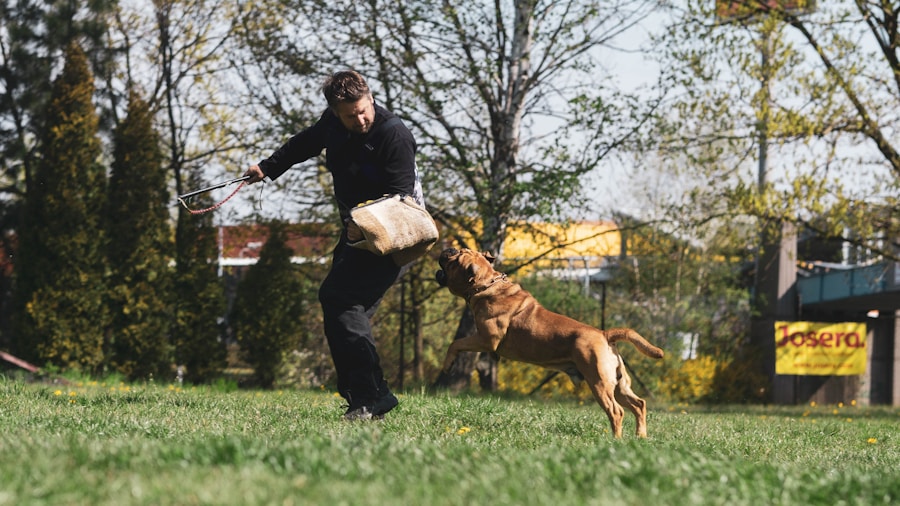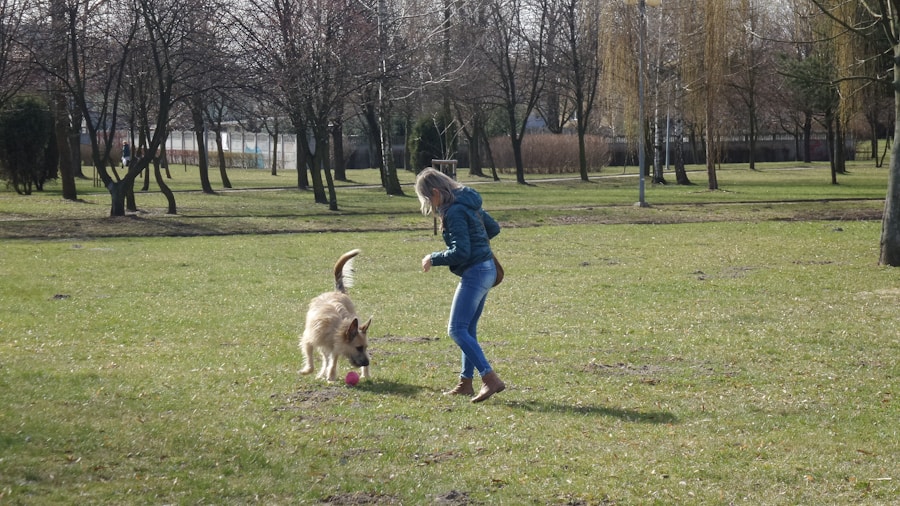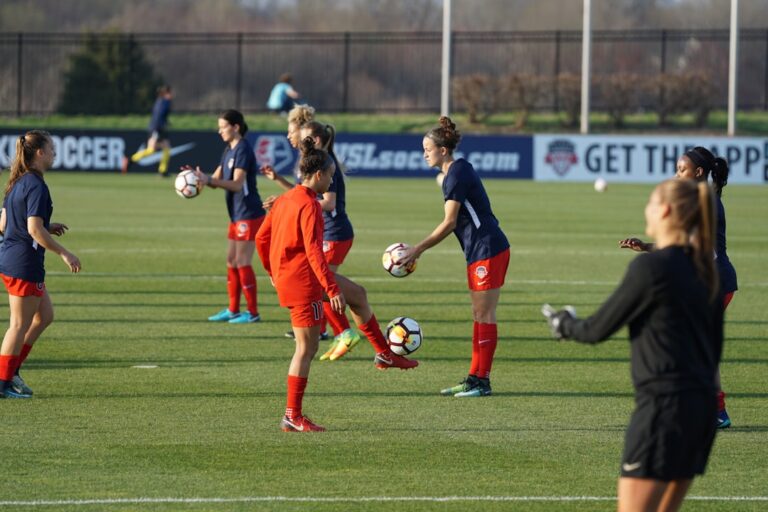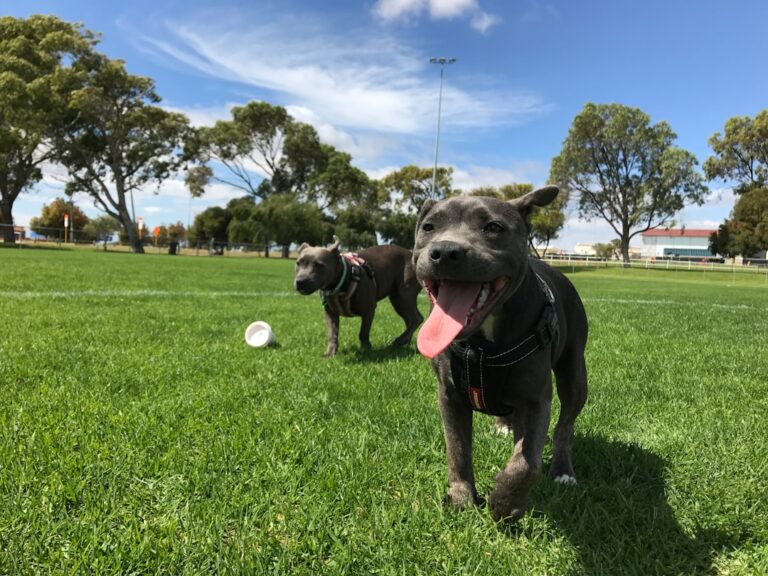Understanding a dog’s behavior is fundamental to fostering a healthy and harmonious relationship between the pet and its owner. Dogs communicate primarily through body language, vocalizations, and their actions. For instance, a wagging tail does not always signify happiness; it can also indicate excitement or anxiety depending on the context.
Observing your dog’s posture, ear position, and facial expressions can provide valuable insights into their emotional state. A dog that is cowering with its tail tucked may be fearful, while one that stands tall with ears perked up is likely feeling confident or alert. Recognizing these subtle cues allows owners to respond appropriately, ensuring that their dog feels secure and understood.
Moreover, understanding the breed-specific traits and instincts can significantly enhance the owner-dog relationship. For example, herding breeds like Border Collies may exhibit behaviors such as chasing or nipping, which are rooted in their instinctual drive to herd livestock. Conversely, breeds like the Basset Hound may display a more laid-back demeanor, often preferring to lounge rather than engage in high-energy activities.
By acknowledging these inherent traits, owners can tailor their training and activities to align with their dog’s natural tendencies, leading to a more fulfilling life for both parties.
Key Takeaways
- Understanding your dog’s behavior is crucial for effective training and communication.
- Establish clear communication with your dog through consistent cues and commands.
- Use positive reinforcement techniques such as treats and praise to encourage good behavior.
- Consistency in training is key to reinforcing desired behaviors and avoiding confusion.
- Set realistic expectations for your dog’s behavior and progress in training.
Establishing Clear Communication
Establishing clear communication with your dog is essential for effective training and building trust. Dogs thrive on consistency and clarity; therefore, using specific commands and signals can help them understand what is expected of them. For instance, if you consistently use the command “sit” while simultaneously using a hand signal, your dog will begin to associate the verbal cue with the action.
This dual approach reinforces learning and helps the dog grasp the concept more quickly. Additionally, maintaining a calm and assertive tone when giving commands can further enhance understanding, as dogs are sensitive to the emotional undertones in human voices. Non-verbal communication also plays a crucial role in how dogs interpret their environment and their owners’ intentions.
Body language can convey a wealth of information; for example, leaning forward can indicate eagerness or excitement, while crossing your arms may signal disapproval or frustration. Being mindful of your own body language while interacting with your dog can prevent misunderstandings and foster a more positive training atmosphere. Furthermore, incorporating consistent routines into daily interactions—such as feeding times, walks, and play sessions—can help reinforce communication and create a sense of security for your dog.
Positive Reinforcement Techniques

Positive reinforcement is a powerful training method that encourages desired behaviors through rewards rather than punishment. This approach is based on the principle that behaviors followed by positive outcomes are more likely to be repeated. For example, when teaching a dog to sit, offering treats or praise immediately after they perform the action reinforces the behavior.
Over time, the dog learns to associate sitting with receiving rewards, making it more likely they will repeat the behavior in the future. This method not only enhances learning but also strengthens the bond between the dog and its owner. In addition to treats, positive reinforcement can take many forms, including verbal praise, petting, or playtime.
Each dog is unique; therefore, it’s essential to identify what motivates your pet the most. Some dogs may respond better to food rewards, while others may be more driven by affection or play. Incorporating a variety of rewards can keep training sessions engaging and enjoyable for your dog.
Furthermore, timing is critical in positive reinforcement; rewards should be given immediately after the desired behavior occurs to create a clear connection in the dog’s mind.
Consistency in Training
| Training Metric | Value |
|---|---|
| Number of Training Sessions | 25 |
| Training Attendance Rate | 90% |
| Consistency in Training Feedback | 4.5 out of 5 |
| Training Completion Rate | 85% |
Consistency is a cornerstone of effective dog training. Dogs thrive on routine and predictability; therefore, maintaining uniformity in commands, rewards, and expectations is vital for successful learning. For instance, if you use different words or phrases for the same command—such as saying “down” one day and “lie down” another—your dog may become confused about what you want them to do.
Establishing a consistent vocabulary helps solidify their understanding and reduces frustration for both the dog and the owner. Moreover, consistency extends beyond verbal commands; it also encompasses the rules set within the household. If a dog is allowed on the couch one day but scolded for doing so the next, it creates confusion about acceptable behavior.
To avoid mixed signals, all family members should agree on training methods and rules regarding the dog’s behavior. This unified approach not only aids in training but also fosters a sense of stability for the dog, allowing them to feel secure in their environment.
Setting Realistic Expectations
Setting realistic expectations is crucial when training a dog. Each dog has its own personality, learning pace, and background experiences that influence how quickly they pick up new skills or behaviors. For instance, a rescue dog may require more time to adjust to training due to past traumas or lack of socialization compared to a puppy raised in a stable environment.
Understanding these differences allows owners to tailor their training methods accordingly and avoid frustration when progress seems slow. Additionally, it’s important to recognize that some behaviors may take longer to modify than others. For example, teaching basic commands like “sit” or “stay” may be relatively straightforward, while addressing issues such as separation anxiety or aggression can require more time and patience.
Owners should celebrate small victories along the way rather than focusing solely on end goals. This mindset not only keeps motivation high but also reinforces the bond between owner and dog as they navigate challenges together.
Socialization and Exposure to Different Environments

Socialization is an integral part of a dog’s development and overall well-being. Exposing dogs to various environments, people, and other animals helps them become well-adjusted adults who are comfortable in different situations. Early socialization is particularly important for puppies; introducing them to diverse experiences during their critical developmental period—typically between three and fourteen weeks—can significantly influence their behavior later in life.
For example, a puppy that has been exposed to various sounds, sights, and smells is less likely to develop fear-based reactions as an adult. However, socialization should be approached gradually and positively. Overwhelming a dog with too many new experiences at once can lead to anxiety or fearfulness.
Instead, owners should aim for controlled introductions where positive experiences are reinforced with treats or praise. Regular visits to parks, pet-friendly stores, or even organized puppy classes can provide valuable opportunities for socialization while allowing dogs to learn appropriate behaviors in different contexts.
Addressing Behavioral Issues
Addressing behavioral issues requires patience and understanding from owners. Common problems such as excessive barking, chewing, or jumping can often stem from boredom, anxiety, or lack of proper training. Identifying the root cause of these behaviors is essential for effective intervention.
For instance, a dog that barks excessively may be seeking attention or expressing boredom; providing more physical exercise or mental stimulation through interactive toys can help alleviate this issue. When addressing behavioral problems, it’s crucial to avoid punitive measures that can lead to fear or aggression. Instead of scolding a dog for unwanted behavior, redirecting their attention towards more appropriate actions can yield better results.
For example, if a dog jumps on guests out of excitement, teaching them to sit calmly when visitors arrive can create a more pleasant experience for everyone involved. Consistent reinforcement of positive behaviors will gradually diminish unwanted actions over time.
Seeking Professional Help if Needed
While many behavioral issues can be addressed through consistent training and positive reinforcement techniques, some situations may require professional intervention. If an owner feels overwhelmed or if their dog exhibits severe behavioral problems—such as aggression towards people or other animals—it may be beneficial to consult with a professional dog trainer or animal behaviorist. These experts possess specialized knowledge and experience that can provide tailored solutions based on individual circumstances.
Professional trainers often employ various techniques tailored to specific issues while educating owners on effective handling strategies. They can also offer insights into underlying causes of behavioral problems that may not be immediately apparent to the owner. Engaging with professionals not only aids in resolving issues but also empowers owners with knowledge and skills that enhance their overall relationship with their dogs.
In some cases, working alongside veterinarians may also be necessary if behavioral issues are linked to medical conditions requiring treatment or management. By understanding canine behavior deeply and employing effective communication strategies alongside positive reinforcement techniques, owners can create an environment conducive to learning and growth for their dogs. Consistency in training practices combined with realistic expectations fosters an atmosphere of trust and security that benefits both parties involved in this unique bond between humans and their canine companions.











